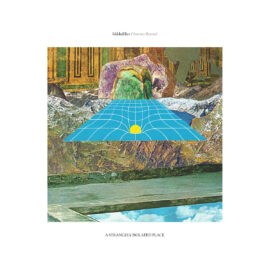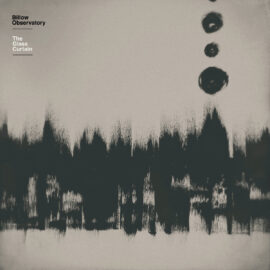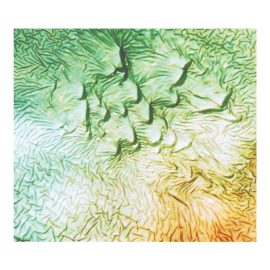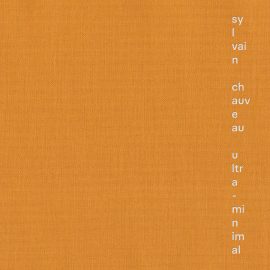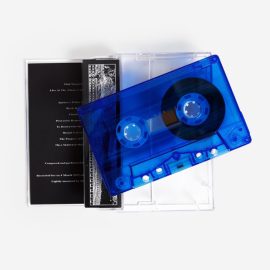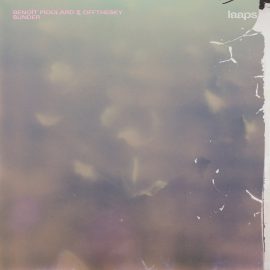 Deru 1979 Friends of Friends Benjamin Wynn a.k.a. Deru first made a name for himself in the 00s with IDM releases on Neo Ouija, Merck and Mush. 1979 is his first album in a few years, and it’s gorgeous. As its title implies, this is music that looks to the dusty nostalgia of the past, though the techniques and styles found herein are not necessarily a throwback to another era. Instead, the quiet, introspective pieces of 1979 capture that feeling of a sun-faded photograph or a small cloud of dust reflecting in sunlight (as if opening an old book or photo album). It might tangentially draw comparisons to the likes of Boards of Canada, but I think there’s just as much of the heartbreaking soft-spokenness of Harold Budd’s delicate piano pieces or M. Geddes Gengras’s modular synthesis meditations in the sweet and sad sounds found here. By and large, these are beatless, stark synth excursions with no shortage of tape surface noise, adding a hazy, warm dustiness to the whole thing. Only on “The Future Never Comes” does Wynn incorporate some rolling percussion patterns, still understated and secondary to its undulating leads and pads, but with a more propulsive sense of momentum. It borders on sentimental, but there is a sweet sadness to most of 1979 that grounds it and makes it feel intensely intimate. I imagine that whether listening on a sunny, hot day or a snow-dusted winter morning, this is music that will continue to resonate on a level that’s deeply moving to me. 1979 is a stark and welcome contrast to Deru’s past rolling-bass and deep-cut rhythmic tracks.
|
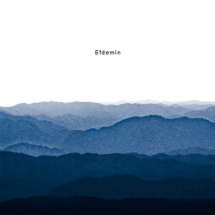 Efdemin Decay Dial The latest from Phillip Sollman as Efdemin is a significant departure from his previous albums. It’s also one of the best techno albums of recent past, making the deviation from his usually more lush stylings into far more repetitive and minimal terrain a good thing. Whereas 2010’s Chicago album was more organic feeling, more human, Decay is the complete opposite. It’s hypnotic and mesmerizing, an album where changes in the sound are subtle and nuanced. Only on “Track 93” does Decay feel like it’s dipping its toes into the same pool of techy house (undermined only by its very fast tempo), with a startlingly clear vocal sample singing, “I gotta love, love, love, right here.” Paired with “The Meadow,” it’s a break in the style that otherwise permeates the album. Indeed, most of Decay’s tracks are meditations on hypnotic rhythm and repetition, with tracks like “Transducer” working with subtle variations in looping and layering while a pulsing pattern radiates continually from its core. It’s interesting that one of the tracks is “Solaris,” with its chiming, pseudo-gamelan chorus of chimes, which reminds me of Cliff Martinez’s excellent score for Soderbergh’s reinterpretation of Stainslav Law’s text of the same name. By tightly honing his focus on this suite of tracks, Sollman has created one of the better techno opuses of recent years. It’s an hour of music that goes down surprisingly easily despite its minimal framework and sensibility — a triumph of less-is-more that services the dancefloor and the brain equally well.
|
|
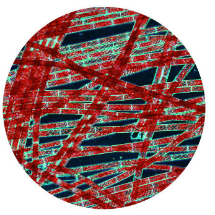 Metrist The People Without Resin I don’t know much about Metrist as an artist, but I was immediately hooked when I heard the rude sounds of The People Without. The hybrid of squelchy, abrasive beats and odd, angular sequencing hits a lot of the right spots in my ears, combining industrial grit with an uptempo swing that lends it to the dancefloor for more adventurous DJs. “Letch” starts things off, with a broken beat that writhes and chugs for the duration, while harsh leads grind away. I’m reminded of the more straightforward rhythmic moments of Ekoplekz or the harder moments of Randomer (but never honoring the impulse to go for a four-to-the-floor kick), sharing that same affinity for distortion and reverb that feels crude and intense but not without some flair. That same broken beat chug appears on “Symphony for the Palpitation,” which is my favorite track of the bunch. Its repetitive synth arps are all the right kinds of intense and gloomy while its beats are chunky and dense, feeling simultaneously urgent and morose. The title denotes the throb at the core of the track appropriately, heaving continuously as the arrangement evolves and flourishes over its duration. The heaving continues on “Cowlick,” probably the most abrasive of the four cuts here, nary a sound left clean or untouched, all rough around the edges and within. “Stanza for the Weak” is the only track that drops a more expected techno kick, still with that industrial edge and a harrowing lead and bassline that recall the most nightmarish moments of Aphex Twin over a more traditional pulsating rhythm section. All in all, Metrist’s tracks here are likely to appeal to fans of the more industrial-crossover side of techno and dance music, perhaps a kindred spirit to artists or outlets like Perc, Randomer, Stroboscopic Artefacts, or Diamond Version, but with a distinctly crude edge that actively tints and enhances the music.
|
 AxH Destroy Tempa Dubstep really has gotten a pretty bad rap in many of electronic music’s interconnected circles. Instead of perceiving it as an either/or, I tend to view most electronic music as a more inclusive “and” — and when it comes to exploring the deepest and most sublime sides of dubstep, few labels are as reliable in my book as East London’s Tempa. After all, Tempa was the label that introduced many of dubstep’s sounds to my ears in the first place, so it’s refreshing to hear them exploring quality sounds, even as they might be more familiar now than ever before. The initial splash of newness has faded, but these are quality productions I think will stand the test of time. AxH hails from Boston, but his style fits neatly into Tempa’s aesthetic. “Destroy” kicks things off with style, a plodding, crisp, clean halfbeat and dubbed out delay and effects in the periphery. On “Giant Footprints,” its filtered bass zips and contrasting fast and slow percussive elements seem fairly familiar, but it’s an impeccably crafted excursion into the darkness and back. The selective use of vocal samples is right on — punctuating AxH’s sounds with a keen sense of timing that again feels as satisfying as it may be familiar. “I Feel Safe” softens the blow with a smooth, melancholy vocal. The nicest thing about AxH’s sonic palette is that despite relying on some familiar dubstep tropes, there is a cleanness to his drum sounds that feels deep without feeling overly heavy-handed. That super thick, white noise-saturated snare that seems so unescapable in most self-proclaimed “dubstep” toolkits is absent, and instead the drumming on Destroy is full-bodied without being in your face, exuding a gravity without feeling self-consciously heavy. It’s tracks like these that remind me of the strengths of dubstep as a loose genre, hopefully shaking off some of the negative stigma attached to the name.
|
|
©
Words by Matthew Mercer of Ear Influxion
Additional editorial by HC


